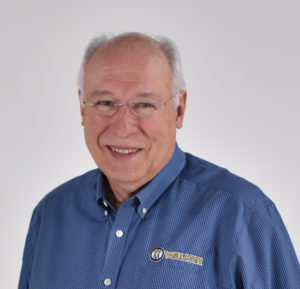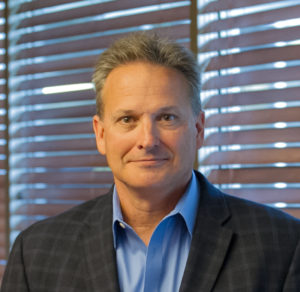2018 Industry Forecasts (Part I)
Top executives reflect on 2017, shed light on what to expect in 2018
Following is the first of a two-part series:
Outdoor Power Equipment (OPE) recently invited many of the OPE industry’s leading executives to share their thoughts about 2017 and the state of the industry heading into 2018. Specifically, we asked them the following questions:
- What is new with your company/organization for 2018?
- What were the OPE industry’s top stories in 2017, and what do you predict they will be in 2018?
- What will be the OPE industry’s hottest trends in 2018, and how can OPE dealers capitalize on them?
- What is your overall outlook for the OPE industry in 2018?
- What advice do you have for OPE dealers in 2018 and beyond?
OPE received the following written responses, in order, Nov. 15-Dec. 5, 2017:
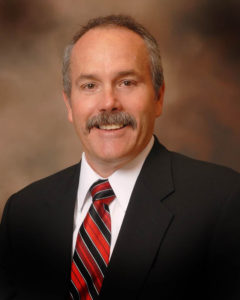
STAN CRADER
PRESIDENT
CRADER DISTRIBUTING CO.
(MARBLE HILL, MO.) &
BLUE MOUNTAIN EQUIPMENT
(McKINNEY, TEXAS)
 1) What is new with your company/organization for 2018?
1) What is new with your company/organization for 2018?
Stan Crader (SC): I’m very excited to announce the publication of Stihl American, a sampling of the early adopters who pioneered Stihl’s reintroduction to North America. Writing the book was a three-year process that caused me to dig deep into my memory of the arrival of our first Stihl chain saw in 1959 and our first order as a distributor, a pallet of 40 saws, arriving by train in 1960. While Stihl is the common thread throughout the book, the story is about the people. Each story is uniquely different and interesting. Stihl American is the story of how an eclectic group of individuals with broadly diverse backgrounds came together and, through luck and happenstance, laid the foundation for what would become one of America’s leading brands.
2) What were the OPE industry’s top stories in 2017, and what do you predict they will be in 2018?
SC: The top industry story in my world was the untimely passing of Stihl Inc.’s immediate past president and my friend, Fred Whyte. Fred began his career with Stihl as a territory manager calling on Midwestern Stihl distributors, including Crader Distributing. Fred was a continual source of encouragement and assistance during the three-year process of writing Stihl American. Only weeks before his death, Fred was gracious enough to edit the book for factual integrity and subsequently provided a review, which graces the back cover of the book. All net proceeds and royalty for book sales are being donated to an endowment established in Fred’s honor at Old Dominion University.
2018 prediction: Growth in handheld gasoline products will continue to taper off, while lithium-ion products will skyrocket. Ride-on products using lithium-ion will be introduced and begin to gain popularity.
3) What will be the OPE industry’s hottest trends in 2018, and how can OPE dealers capitalize on them?
SC: The hottest trends for 2018 are the same as 2017, the continued rapid adoption of lithium-ion products. The advent of battery products gives the dealer a chance to attract a new category of customer, those who aren’t interested in gasoline-powered products but are comfortable with battery.
4) What is your overall outlook for the OPE industry in 2018?
SC: So long as people and businesses are interested in landscaping or gardening, there will be great need for outdoor power equipment. New homes are being built daily and moved into by those looking to purchase their first OPE tool. Existing customers will be returning to stores to add to the assortment already hanging or sitting in their garage.
5) What advice do you have for OPE dealers in 2018 and beyond?
SC: With the introduction of high-quality and powerful battery tools, which require less setup, the dealer will need to make sure the in-store experience exceeds the customer’s expectations. Online sales continue to slowly encroach on our industry. Once a customer walks through the door, the dealer will determine if that person will return to make their next purchase or choose to shop online. There will be the need for brick-and-mortar stores so long as the customer chooses to visit us. Make sure the in-store experience is exceptional.
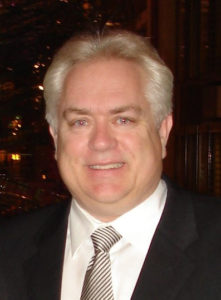
JOHN D. HEDGES
DIRECTOR OF SALES AND MARKETING
CENTRAL POWER DISTRIBUTORS, INC. (CPD)
(ANOKA, MINN.)
1) What is new with your company/organization for 2018?
John D. Hedges (JDH): Heading into 2018 will be more on our minds and plates than actually in place. We have hired some nice, talented people into our organization to replace some that left or retired. Like most of those reading this, finding key people is always a challenge. There is always uncertainty whenever Internet is mentioned in a conversation. How will this area be controlled by the manufacturers and ourselves to protect sacred margins? We believe lithium is here to stay and not just stay, but to grow. This might not be as glorious as it sounds because it takes away some engine parts sales. And the death of several large mass merchants opens up opportunities for the dealers, or does it?
2) What were the OPE industry’s top stories in 2017, and what do you predict they will be in 2018?
JDH: Obviously, the death of our industry friend Fred Whyte tugged on all of our hearts. If there was anything to learn from that it is, live for today, and live to the fullest. He was a fantastic role model and obviously will be missed.
The acquisition of Stens by Arrowhead Electrical Products Inc. was big news. Gardner acquiring Dixie Sales was another news-making acquisition in the distributor circle. Hitachi was sold to KKR, which affected the Tanaka product line. And last but I’m sure not least was President Trump winning the election. The stock market is still having historically high marks at the time of this writing, and his policies should affect our industry in a positive way.
As far as predicting what will be the news in 2018, here you go. Certain large mass merchants will continue to lose market share, and it will change their normal way of business. Some of them might even get out of lawn equipment, and some will go away. This is not necessarily good news for the dealer either. On one hand, the dealer will benefit from selling equipment if they do so, and yet on the other hand, they will lose parts business and service if they don’t sell equipment. This will be a possible growing trend for all of us, unfortunately.
It will be harder to get techs, with more retiring in 2018. Dealers will need to broaden their service offerings to include UTVs and ATVs to be able to hire better mechanics at a better wage.
3) What will be the OPE industry’s hottest trends in 2018, and how can OPE dealers capitalize on them?
JDH: Amazon’s attempt to take over the world will continue to make big news. The bad part is that it is going to hurt many companies along the way. Dealers might not be the ones to capitalize on Amazon growth; it might be the distributors and/or the manufacturers. Either way, it may not be a positive trend for the dealer.
Lithium-powered products will dominate the news in 2018. The lithium-powered manufacturers need to find a way to be more appealing to the landscapers by creating a mass charging station. The product mixes will grow, and the sky might be the limit for these off-shore companies.
More sophisticated gas engines will lead the way to higher wages for the dealer technicians.
A reduction of good dealers will add to the difficulties of long service wait times for consumers. More consumers will have their lawns done for them because it can take up to three weeks to get a product fixed. Dealers have to find a better way to reduce those wait times.
4) What is your overall outlook for the OPE industry in 2018?
JDH: I believe the outlook for 2018 is very good. It would be nice to get back to roaring snow days, which creates sales as well as dealer confidence. There are always service opportunities for a person that wants to start a new business. If the economy continues to grow, new equipment sales might occur in record amounts. If the Congress passes a tax bill before the end of 2017, more equipment might be purchased beginning with snowblowers, logsplitters, ATVs, and more. Small businesses will benefit from lower taxes, which can be used for more or newer equipment. And finally, if the Affordable Health Care Act becomes affordable, our industry could benefit at all levels.
5) What advice do you have for OPE dealers in 2018 and beyond?
JDH: I believe the dealers need to create some of their own positive outlooks by holding open houses, advertising their services, and having specials that take on the mass merchants. Unfortunately, the dealers are now fighting an enemy they can’t locate, the Internet sales.
With all the positive indicators, the year will still be dictated by how the manufacturers deal with the Internet. Products will continue to be sold online, but getting that product repaired could be a problem. Anyone can sell online, but how will the after-the-sale service be? If the dealers want to be a part of the Internet growth, they’ll need to find a way to be a part of it. That might be servicing the end user no matter who they are or where they get their equipment.
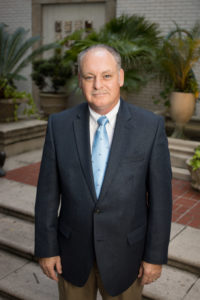
KIM ROMINGER
PRESIDENT & CEO
EQUIPMENT DEALERS ASSOCIATION (EDA)
(ST. LOUIS, MO.)
1) What is new with your company/organization for 2018?
Kim Rominger (KR): The Equipment Dealers Association’s primary efforts will continue to be focused on dealer advocacy on Manufacturer Relations, Federal Government Relations, Regulatory Compliance, and Education in the U.S. and Canada. EDA’s OPE Dealer Council, comprised of OPE dealers from throughout North America, will continue to identify issues impacting OPE dealers and work with and advise the EDA board of directors to effectively address issues of importance.
A key area of emphasis for all EDA dealer members will be an enhanced focus on workforce development in our industry. The industry as a whole recognizes the need to address the many challenges in recruiting, training, and maintaining a skilled, qualified workforce. In September 2017, EDA through its Equipment Dealers Foundation organized a Workforce Development Summit attended by key industry representatives to begin steps to consolidate resources and opportunities to address this important issue. A working group consisting of industry organizations, including OPEI and spearheaded by EDA, will be meeting throughout 2018 and beyond to continue the effort.
EDA will also be working with the United Equipment Dealers Association, represented regionally in Ohio, Michigan, Indiana and Kentucky, to expand OPE dealership performance benchmarking data throughout North America. EDA will also be promoting the online version of the Flat Rate Guide to help OPE dealers be more efficient in their service departments.
2) What were the OPE industry’s top stories in 2017, and what do you predict they will be in 2018?
KR: First and foremost, technological advancements with electric-powered, robotic equipment and smart technology. This will continue to be the case, especially in battery and smart technology. Advancements in handheld battery technology will continue to impact the products dealer sell, and battery-powered applications for larger equipment will be here soon. Dealers will have more equipment and feature options to offer customers. Dealers must start thinking now of how they will address the implications on battery-powered advancements to service and parts department in the coming years. What will they be repairing, etc.? Addressing the workforce dilemma will continue to be problematic in 2018. The growth in UTV offerings by manufacturers was significant in 2017, and it will be interesting to see if it plateaus in 2018.
3) What will be the OPE industry’s hottest trends in 2018, and how can OPE dealers capitalize on them?
KR: See #2.
4) What is your overall outlook for the OPE industry in 2018?
KR: Weather will always be the primary determining factor for OPE dealership sales growth and profitability. Economic indicators suggest continued sales growth. Steady housing starts, low unemployment and general economic optimism should lead to continued growth in the industry. We would expect to see continued growth in the commercial segment to outpace consumer growth.
5) What advice do you have for OPE dealers in 2018 and beyond?
KR:
* Dealers should continue to build their dealership brand and presence online. EDA hosted a six-part webinar series for OPE dealers to help navigate the challenges with digital marketing. These and other EDA educational webinars are available on the EDA website.
* Dealers should align themselves with a manufacturer who is committed to battery/electronic technology.
* Dealers should develop and implement a workforce development strategy.
* Dealers should build a foundation of professionalism and incorporate into their operating model.
* Take advantage of educational opportunities through EDA webinars and streamline your business with the tools available such as the online Flat Rate Guide when released.
BOB WALKER
PRESIDENT
WALKER MFG. CO.
(FORT COLLINS, COLO.)
1) What is new with your company/organization for 2018?
Bob Walker (BW): For 2018, the Walker Model S18 is being introduced with an 18-hp. Briggs & Stratton Vanguard engine in the “S” chassis, offering an entry-level machine for commercial operators. Another important new product being offered is the Power Tilt-Up for the Model H decks. Planning is underway for the Walker Family Reunion III to be held in July 2018 — a three-day celebration marking production of the 150,000th Walker Mower. Also, the 150,000th commemorative, limited-edition Model MT27i will be available for sale to dealers and end customers with special identifying features and series numbering.
2) What were the OPE industry’s top stories in 2017, and what do you predict they will be in 2018?
BW: We think the best industry story is that 2017 has been an expansion year for the OPE industry as a result of the economy growing and employment rising in many parts of the U.S. Also, it seems that many of the worldwide economic conditions have been lifted, which has caused significant increases in export sales. We do not have a biggest story prediction for 2018.
3) What will be the OPE industry’s hottest trends in 2018, and how can OPE dealers capitalize on them?
BW: In the area of products, it appears that battery-powered handheld equipment and stand-on mowers are the hot areas of the market with many manufacturers jumping on board. Note: Walker is planning to continue our focus on front-mount zero-turn riding mowers. Concerning market trends affecting dealers, the sale of service parts online is going to affect dealer over-the-counter parts sales in the future, both in profitability and quantity. Some dealers are getting into the online sales business as an opportunity, while others will need to makes changes and adjustments in their business model to allow for the shift away from over-the-counter parts sales. See (#5 response) below for some suggestions for dealers on ways to capitalize on industry trends.
4) What is your overall outlook for the OPE industry in 2018?
BW: Our overall outlook for the OPE industry is positive. There are signs of favorable business and economic conditions continuing. There are several continuing growth opportunities in the OPE market, including commercial-grade zero-turn riding mowers — the market segment in which we operate with the Walker Mower.
5) What advice do you have for OPE dealers in 2018 and beyond?
BW: We offer the following suggestions for dealers: (a) Focus on selling value-based products to value-conscious customers; (b) Sell your valuable service at the same time as you sell the product; (c) Sell the full spectrum of your service, including your great technicians, product selection, operator and maintenance training, financing, troubleshooting, service parts inventory and warranty administration; and (d) Make coming to your dealership an enjoyable experience and a destination — something the customer will not experience at a mass merchant or an online retailer. People still love to do business with people.
LARRY WEYERS
POWER EQUIPMENT PRESIDENT
ARIENS COMPANY
(BRILLION, WIS.)
1) What is new with your company/organization for 2018?
Larry Weyers (LW): There’s a lot new with Ariens Company, starting with me. I was hired recently to lead our power equipment business, and with that, comes a more focused approach toward working with our dealers and our dealer advisory council. By working closer with them, we’re going to have a more clear understanding of our own product lines, as well as their product needs, which helps us develop equipment that brings them the highest return, all while improving our market share.
We’re also making some changes to how we build products going forward. Our lean journey has been focused on the assembly area, and we’re now going to take that from raw material through the final shipment of the product to the customer. So, that will involve some adjustments to our manufacturing spaces over the next year or so to ensure that we can build more product, more efficiently, with a smaller footprint.
Overall, we as a company are very optimistic for this upcoming year and look forward to continuing to make great products.
2) What were the OPE industry’s top stories in 2017, and what do you predict they will be in 2018?
LW: One of the big stories that affected our industry was the spiral of Sears and subsequently, how that is affecting the Craftsman brand. We’re seeing it being split up now, with parts of it going to Lowe’s and other parts to Home Depot. So for the industry, we think that’s going to shake things up.
We also, as a company, are seeing an explosion of growth in our residential zero-turn product lines. I think that is attributed, in part, to the growing housing economy and the strength of the American economy at the moment. We’re seeing more and more Americans buying homes this year compared to recent years, and we’re seeing that they’re buying zero-turns now more than ever before.
Coupled with that increase in demand, we’re also noticing that the quality of residential mowers at lower price points is improving drastically across the board. More and more brands are beginning to offer a great machine at an affordable price point, which is attracting more consumers toward making zero-turn purchases.
Finally, one of the biggest stories that we keep our eyes on is the increasing health and environmental restrictions.
3) What will be the OPE industry’s hottest trends in 2018, and how can OPE dealers capitalize on them?
LW: In the coming years, the growth and expansion of e-commerce will have a big effect on our industry. And while more and more opportunities to purchase online are forming, 65 percent of OPE customers are still buying from dealerships. We think that’s a huge opportunity for our dealer base. For them, evolving their sales tactics to reach new millennial customers and first-time homebuyers is going to be key. An emphasis on digital marketing and social media involvement will help propel both our dealers and our brands into the future, ensuring that we remain competitive for years to come.
In addition, while this isn’t really a trend, we’re seeing the zero-turn market becoming more and more crowded. New manufacturers are entering the space each year and providing endless zero-turn options for consumers. This is something we need to keep an eye on as a brand to make sure that we remain a top-of-mind, high-quality brand and can cut through the clutter.
4) What is your overall outlook for the OPE industry in 2018?
LW: My outlook is positive. With the growth of both the housing market and the economy, I think we’re going to continue to see steady sales. With the popularity of zero-turns on the rise, I think there’s only opportunity for growth across the industry.
From the dealer standpoint, we’re continuing to see attrition amongst long-term dealers in the OPE category. However, there’s also been a boom of younger generations entering the industry on their own and starting dealerships, which is a really positive thing. One of the biggest things affecting them in 2018 will continue to be the availability of both skilled and unskilled labor. The ability to attract and retain talent is the key to their success as dealers.
5) What advice do you have for OPE dealers in 2018 and beyond?
LW: My biggest piece of advice is to learn how to evolve, and to do it quickly. Times are changing at a very fast pace, and the way that people are buying products is not the same as it was even five years ago. Embrace the digital world, and learn how to make it work for you, not against you. Learn how to share the marketplace with other sales channels, and figure out how to make your store stand out amongst the clutter. By doing all of this, we believe our dealers will be poised for success next year and beyond.
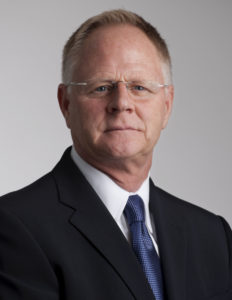
KRIS KISER
PRESIDENT AND CEO
OUTDOOR POWER EQUIPMENT INSTITUTE (OPEI)
(ALEXANDRIA, VA.)
1) What is new with your company/organization for 2018?
Kris Kiser (KK): The market is good, and the industry is doing well. We see that illustrated in a big way with the continued growth of GIE+EXPO. This year, the show was ranked 10th in the list of largest trade shows in the U.S. by Trade Show Executive magazine, and next year looks like it will be even bigger.
TurfMutt, our educational program that has reached more than 68 million students, educators and families, won a Cynopsis Award, beating out competition from Nickelodeon and Disney. And in 2017, at the request of the U.S. Green Building Council, TurfMutt was included in its Learning Lab, an international resource clearinghouse for science educators. We’re very proud that TurfMutt continues to win awards and has reached an extraordinary number of people with his message of the importance of the living landscape.
In a testament to OPEI’s strength, growth and member engagement, we bought a new building in the D.C. metro area. Thirty years ago, our board was prescient in purchasing a building in Alexandria, Va., but we have outgrown it. Thanks to market appreciation, we have sold that space and purchased a new building that will meet the association’s growing needs for meeting space going forward.
Dealing with the anticipated regulatory challenges in California has also been a significant undertaking. California is a leader in demonizing the living landscape, and its misguided response to drought has been to tear out turf and remove landscapes. As a result, the state is seeing an increased heat island effect in its cities, a massive tree die-off and terrible mudslides due to erosion. Those challenges are being met by working with our partners — including the National Association of Landscape Professionals, the Irrigation Association, Turfgrass Producers International and others — to continue to promote the living landscape.
We’re also seeing increased calls for leaf blower bans in many parts of the country. We’re working with manufacturers and affected parties to make sure OPE dealers, retailers and consumers still have access to the wide range of equipment they need.
As more battery equipment comes into the marketplace, we anticipate increased regulatory requirements. Do you end up with something similar to OPEI-Canada, the program in British Columbia where the industry is tasked with recovery and recycling of electric equipment recycling? That’s unforeseen, but we know the regulatory landscape will continue to develop and evolve.
And as the equipment that manufacturers are bringing to the marketplace — and that OPE dealers and retailers are selling to customers — continues to evolve, so too will the skills their employees need. OPEI is well positioned to deal with these challenges, thanks to our broad and highly engaged membership base. Our members represent all major product categories in the outdoor power equipment industry, and we continue to work with them to address these challenges head on.
2) What were the OPE industry’s top stories in 2017, and what do you predict they will be in 2018?
KK: Once again, we saw the largest GIE+EXPO in history. The 2018 show looks to be, again, the largest ever, and we’ve been working to accommodate exhibitor expansion requests.
Another ongoing story that dominated 2017 and will continue to play a role in 2018 remains the challenges to the living landscape — including regulatory limits on turf grass and water limitations. The regulatory challenges facing the industry are real and robust.
Looking forward to 2018, the current evaporative emissions program changes in California begin in January and are extreme. They will affect the industry in a very real way, and there will be cost consequences. Emissions requirements in the state are expected to change in 2020, and they will have significant and challenging impacts on the industry in the years to follow. How exactly that plays out, we aren’t yet certain. But OPEI has terrific working relationships with regulatory authorities, and we have in place highly talented staff and consultants at the highest level to continue our work to defend our members’ interests and promote the value of the living landscape to people, pets and the environment.
3) What will be the OPE industry’s hottest trends in 2018, and how can OPE dealers capitalize on them?
KK:
Robots. Autonomous mowers are moving into the future of the market in a meaningful way. A number of our members are actively engaged both in our robotic mower committee, and the battery and electric product committee. More and more suppliers are entering into the battery marketplace, and it’s more than a trend. It’s part of the future. Battery and corded products will make up a larger portion of the OPE dealer’s portfolio moving forward. OPEI will in early 2018 release the first-ever robotic mower standard, and our highly regarded market statistics program also collects data in six different categories of battery and corded equipment, which we share with our members.
Dealers and retailers will have a broader and more diversified range of products to offer their customers next year. Zero-turn mowers continue to sell exceedingly well, and both landscapers and homeowner purchases indicate a strong desire for the equipment necessary to maintain the living landscape.
Workforce development. We recognize the challenges that dealers and retailers face when it comes to finding qualified employees. Our members face similar challenges in workforce development for their own businesses, and we are working with the Equipment Dealers Association, as well as other national and regional dealer and retailer organizations, to help boost the talent pipeline coming into the industry and develop the skills of employees currently working in the space.
4) What is your overall outlook for the OPE industry in 2018?
KK: The market is strong, and 2018 looks very good. One of the ways we know that is the growth of GIE+EXPO year over year over year. It’s a testament to the value of products in the marketplace to dealers, contractors and consumers. We believe that 2018 will be, again, the largest show ever, and we’ve changed the floor plan to accommodate exhibitor expansion requests.
5) What advice do you have for OPE dealers in 2018 and beyond?
KK: OPE dealers need to continue to educate their customers about the importance of living landscapes — putting the right plant in the right place, wise water use, enhancing pollinator support and biodiversity — and that the living landscape isn’t just an aesthetic benefit. It provides many benefits to the environment. These folks are our best advocates to promote the many values of the living landscape as a safe and healthy place for families and pets to live and play.
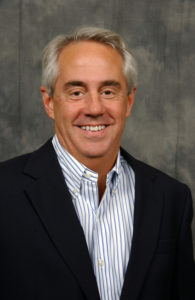
RICK CARPENTER
VICE PRESIDENT
CORPORATE MARKETING
BRIGGS & STRATTON CORP.
(MILWAUKEE, WIS.)
1) What is new with your company/organization for 2018?
Rick Carpenter (RC): When I think about what is new at Briggs & Stratton, we break it into two segments: Consumer and Commercial.
For Consumer, we continue to bring our recent innovation into more engine series and across more applications. The response to quieter, easier-to-start engines that allow the mower to be stored upright and that never need an oil change have been very well received by homeowners because it allows them to get the work done as easily as possible. Specifically in 2018, we’re expanding our Mow N’ Stow technology to more power levels that will exclusively power the expanded SmartStow mower series by Toro. We’re also bringing the easy maintenance of Just Check & Add throughout our line in the 625EXi Series engine and our 775 and 875 Professional Series engines that are widely used on walk mowers and pressure washers.
And it’s not just mower engines. This year, we launched our Quiet Power Technology (QPT) on an inverter generator, the Q6500, so the innovations are crossing products as well. Another consumer product innovation is the 8,000-watt Elite Series portable generator with StatStation Wireless Bluetooth technology, which monitors vital information like power usage, run time, fuel level and more from the comfort of your home, so you do not have to go outside to monitor.
For Commercial, we design engines aimed at improving productivity and performance. Oil Guard by Vanguard successfully launched last year and continues to be adopted quickly because the 500-hour oil-change intervals help drive productivity for commercial cutters. 2018 also brings expanded EFI offerings customized to the application for enhanced performance, as well as the launch of a new Vanguard single-cylinder horizontal engine with unique performance-driven features like our cyclonic air filtration system and TransportGuard.
We continue to expand our Ferris and Billy Goat brands to drive growth in the commercial market. Ferris is expanding its mower offerings, with the recent launches of the SRS Z3X stand-on zero-turn mower, 400S and IS 600Z zero-turn mowers, as they allow commercial cutters to reach new levels of productivity.
Our Billy Goat brand helps with debris maintenance. It recently launched a new truck loader, and the first 37-gross-horsepower Vanguard EFI-powered debris loader in the market.
In that same endeavor to improve users’ productivity, we’ve expanded beyond products into business solutions with the introduction of InfoHub for Commercial Turf by Briggs & Stratton. InfoHub is a technology-driven business solution for commercial cutters that allows them to take control of their business. Using real-time data, cutters can analyze profitability, track their crews and equipment, optimize job scheduling, and improve their bidding process through a connected device that can go on any engine. It debuted at GIE+EXPO, and the reception has been fantastic.
2) What were the OPE industry’s top stories in 2017, and what do you predict they will be in 2018?
RC: The continued growth of the commercial market was a key story in 2017 and will remain so for the industry and for Briggs & Stratton, as we see generational shifts in how consumers want to care for their properties. For example, baby boomers are moving from “do it yourself” to “do it for me.”
On the residential side, we’re also seeing positive signs. 2017 saw a relatively strong economy and encouraging movement in the housing market. From a product perspective, zero-turn mowers are a fast-growing segment for residential use as consumers value time and find this product useful in finishing the job more quickly.
The continued growth of these markets will continue to be a top story in 2018.
3) What will be the OPE industry’s hottest trends in 2018, and how can OPE dealers capitalize on them?
RC: Productivity and the applications that drive it will continue to be essential to the commercial world as commercial operations seek ways to be more efficient and profitable.
EFI is a key offering that helps in that effort with easy starting, fuel efficiency, and stale fuel protection as just a few of the benefits driving productivity. To make this technology accessible and most effective in the various applications, Briggs & Stratton offers more versions of EFI than anybody else.
From a product standpoint, stand-on rides are coming on strong as evidenced by their presence at GIE+EXPO because of the ease of use and shorter wheelbases. Briggs & Stratton’s Ferris brand launched two new stand-on rides for 2018 that include OilGuard, which improves a cutter’s productivity and “up time.”
For dealers, understanding the value of productivity for the commercial user will take you from a transaction-based service relationship to a smart business partner. Helping commercial users to be more productive and understanding their business will go a long way toward earning their loyalty and dollar.
While productivity is the key for commercial, innovation is the focus for the consumer.
The pace of innovation has sped up. For a homeowner who hasn’t been in the marketplace for a mower, in seven years or so — they are going to be very surprised by the features now available to them. The new products that Briggs & Stratton has launched in the past few years have been so well received, that we’re combining and expanding them to make this innovation even more accessible to homeowners.
Dealers are uniquely positioned to help educate their customers in a way that other outlets may not. If a dealer can help a homeowner make the right decision for themselves at initial purchase, then they will have a loyal customer with high lifetime value.
4) What is your overall outlook for the OPE industry in 2018?
RC: Fundamentally, I am aligned with OPEI’s forecasts for moderate growth in the consumer market and stronger growth in the commercial market.
Beyond forecasted numbers, there is a lot of positive and encouraging activity in the category that we should be celebrating. For a long time, the industry has had a perception of not being dynamic or innovative, and I think that is changing — and with good reason. There are many new products and services that are making it exciting in meaningful ways — not just innovation for the sake of innovation, rather end-user need focused. I think about our significant engine and product innovation in this way, but also our InfoHub for Commercial Turf platform. It’s not just a new product offering; it’s a whole new business solution, and that is exciting.
5) What advice do you have for OPE dealers in 2018 and beyond?
RC: There are many, many places where a homeowner or a commercial customer can buy equipment and get it serviced. That’s not a value proposition; that’s a transaction.
Because of the depth of knowledge about outdoor power equipment, a dealer’s value is so much more than the transaction. It’s critical that dealers leverage that value.
I mentioned earlier that dealers need to be a smart business partner for their commercial customers, and that means understanding the products, trends and offerings that are impacting their business and sharing that knowledge with them proactively in conversation, emails, social media and other communication.
For the consumer coming into a dealer, they likely haven’t bought a new mower or other piece of equipment in 5-10 years. They don’t know what is new and different, and the dealer is in a great position to educate the consumer and provide a positive buying — and ultimately using — experience.
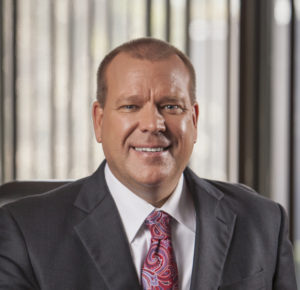
BJOERN FISCHER
PRESIDENT
STIHL INC.
(VIRGINIA BEACH, VA.)
1) What is new with your company/organization for 2018?
Bjoern Fischer (BF):
- At the beginning of 2017, Stihl Inc. announced the largest new product launch in our company’s history — with more than 40 new model designations — including the rollout of the new Stihl Lightning Battery System and a new line of Stihl pressure washers.
- As we enter 2018, we look forward to capitalizing on this momentum and continuing our legacy of innovation with new products that continue to meet — and exceed — the evolving needs of our customers.
- With one of the broadest handheld OPE product lines in the industry, we are responding to homeowner and professional needs for varying power sources — whether gasoline, corded-electric or battery — while also providing our servicing dealers even more options to attract new and existing customers and ultimately grow their businesses.
- As a result, Stihl servicing dealers are currently outpacing the OPE market and gaining market share versus key competitors.
- We are thrilled to announce a new generation of products, starting with the launch of Stihl iMow.
- The first robotic lawn mower from Stihl gives homeowners the perfect lawn with minimal effort —You Relax, iMow.
- With iMow, a user’s lawn is greener and healthier due to regular mowing versus traditional once-a-week mowing. A lawn will always look mowed and manicured, allowing the user to enjoy the lawn without all the work.
- These premium Stihl products are backed by specially trained Stihl iMow servicing dealers who provide their customers with product information, on-site installation and service after the sale.
- We have a wide range of new products forthcoming in 2018 to include continued expansion of the Stihl Lightning Battery System. In addition, gasoline-powered equipment will remain a significant part of our investment in groundbreaking design and engineering, with new products for both homeowners and professionals.
- Stihl is also investing heavily in all areas of the company, including R&D, inventory, manufacturing and expansion of our facilities across the country, to ensure quality products are delivered on time to our dealers and their customers.
2) What were the OPE industry’s top stories in 2017, and what do you predict they will be in 2018?
BF:
- Millennials continue to be a hot topic, particularly how to attract a generation of customers who were raised on a big-box buying experience.
- As customer demographics and buying habits are changing at a rapid pace, as an industry, we need to adapt to stay competitive.
- On our end, Stihl is adapting by bringing the latest technology and products to the market and by supporting our servicing dealers with comprehensive training and innovative marketing resources to meet these new demands and attract new customers.
- The continued emergence of online retail giants, particularly com, is another recurring storyline.
- Despite this, we are still seeing a resurgence of buying local. Servicing OPE dealers are taking back market share from the big-box stores.
- At Stihl, our dealers are the lifeblood of our business — and largely the reason we continue to be the number one selling brand of gasoline-powered handheld outdoor power equipment in America* — a position we have maintained, without sacrificing our values or conforming to the “Amazon model.”
- We will continue to focus on growing our network of Stihl dealers who continue to provide the quality service that we believe sets them apart from the big-box stores and online retailers.
3) What will be the OPE industry’s hottest trends in 2018, and how can OPE dealers capitalize on them?
BF:
- Battery products continue to be a trend in our industry.
- While we believe there will be a dramatic increase in battery-powered equipment over the next five years, particularly with homeowners, we expect the Stihl gasoline business will continue to grow.
- Reducing the carbon footprint continues to be of importance to our homeowner and professional customers alike. Many local governments and municipalities are reinforcing — and in some cases, mandating — the use of eco-conscious products.
- Manufacturers are focused on making products that are lighter with increased fuel efficiency, lower vibration, longer run times and extended service intervals. These features enable users to save time and money whether it’s on the job or working in their own backyards. For professionals, these features save time and money, thereby allowing them to maximize profits as they are able to get more done in a day’s work.
- Our engineers are exceeding expectations in these areas and spearheading new innovations in battery technology with the continued expansion of the Stihl Lightning Battery System.
- This tiered system includes three distinct lines of battery-powered products that allow users to choose the right tool to get the job done while delivering high performance in an easy-to-use, low-maintenance package.
- Stihl dealers capitalize on this trend by stocking a range of equipment — battery and gasoline powered — that respond to their customers’ needs.
4) What is your overall outlook for the OPE industry in 2018?
BF:
- Overall, we are very optimistic about the OPE industry in 2018. As previously stated, servicing OPE dealers are taking back market share, and our network of Stihl dealers is currently outpacing the market growth.
- We are forecasting another year of growth and are confident that our Stihl servicing dealers will see great success in 2018.
5) What advice do you have for OPE dealers in 2018 and beyond?
BF:
- We believe the reason behind the continued growth is simple: Stihl dealers provide hands-on product knowledge, operating instructions and service that cannot be found at big-box stores or online.
- Our advice for OPE dealers would be to never stop learning. The OPE industry is constantly evolving, and continued training and education will help to set the good dealers apart from their competition.
- As new products are launched into the marketplace and technologies evolve, training must also be updated along with it. Because of this, at Stihl Inc., we are consistently working to evolve our dealer-targeted support programs.
*“Number one selling brand” is based on syndicated Irwin Broh Research, as well as independent consumer research of 2009-2016 U.S. sales and market share data for the gasoline-powered handheld outdoor power equipment category combined sales to consumers and commercial landscapers.

